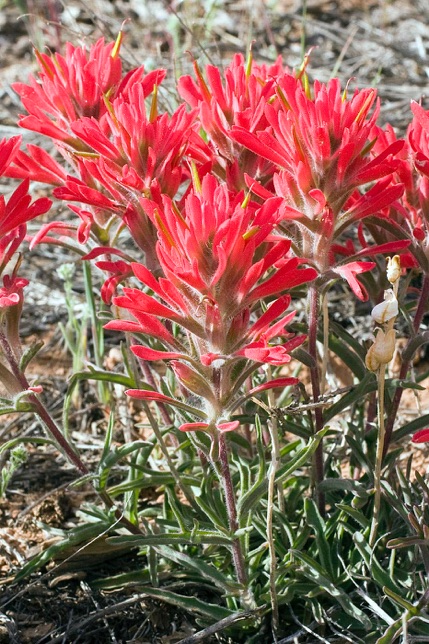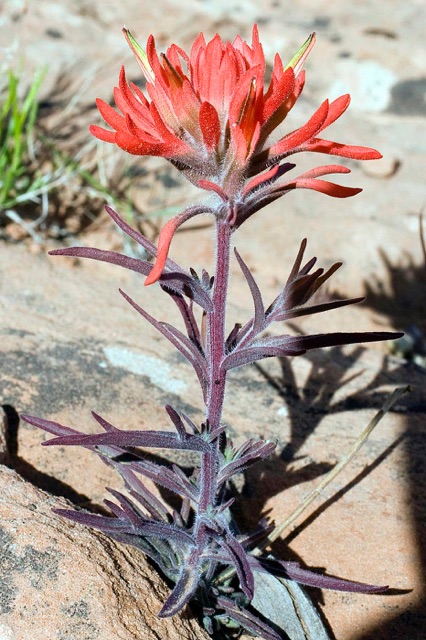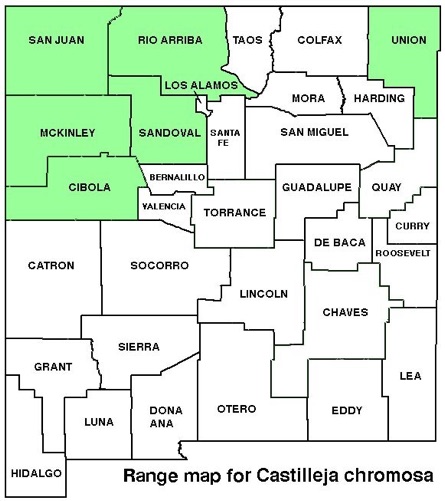WILDFLOWERS OF NEW MEXICO

Single or in clusters, the stiff, erect 6–18-inch tall stems are topped with showy flower clusters with scarlet, fork-lobed bracts. Note the mid-stem leaves are forked and vary from dull-green to a striking purplish-red; foliage and bracts densely covered with short and long hairs; pointed green flowers extend beyond red sepals. Though the leaves photosynthesize, the roots are parasitic on grass roots.
FLOWERS: March–June. Cluster spike-like with colorful bracts. Outer half of bracts bright red to red-orange, most with 3–7 slender lobes. The yellowish-green, beak-like flower, 3/4–1 1/8-inches long (20–30 mm), protrudes beyond the colorful sepal tube (calyx) .
LEAVES: Alternate, densely covered with long and short stiff hairs. Mid-stem leaves 1–2 3/4-inches long (2.5–7 cm), deeply divided into 3–5 narrow, spreading lobes; margins often folded or inrolled along the midrib.
HABITAT: Dry sandy, gravelly soils, plains, badlands; sagebrush scrub, pinyon-juniper, ponderosa forests.
ELEVATION: 3,700–8,800 feet.
RANGE: All states from Rocky Mountains westward.
SIMILAR SPECIES: About 21 species of paintbrush in NM. The deeply-forked, densely-hairy stem leaves and bracts help identify this species.
NM COUNTIES: Infrequent in low- to mid-elevation, arid habitats in nw NM: Cibola, McKinley, Rio Arriba, San Juan, Sandoval, Union.









DESERT PAINTBRUSH
CASTILLEJA CHROMOSA (CASTILLEJA ANGUSTIFOLIA VAR. DUBIA)
Broomrape Family, Orobanchaceae (formerly in Scrophulariaceae, Snapdragon Family)
Perennial hemiparasitic herb
Mid-stem leaves with fork-like lobes (arrows).


















THE CONTENTS OF THIS WEBSITE ARE COPYRIGHTED AND CANNOT BE USED
WITHOUT PERMISSION OF GEORGE OXFORD MILLER






































-
1.Green, beak-shaped flower protrudes beyond the red sepal tube (calyx) (upper arrow).
-
2. Red bracts with fork-like lobes (bottom arrow).


















EMAIL ME







